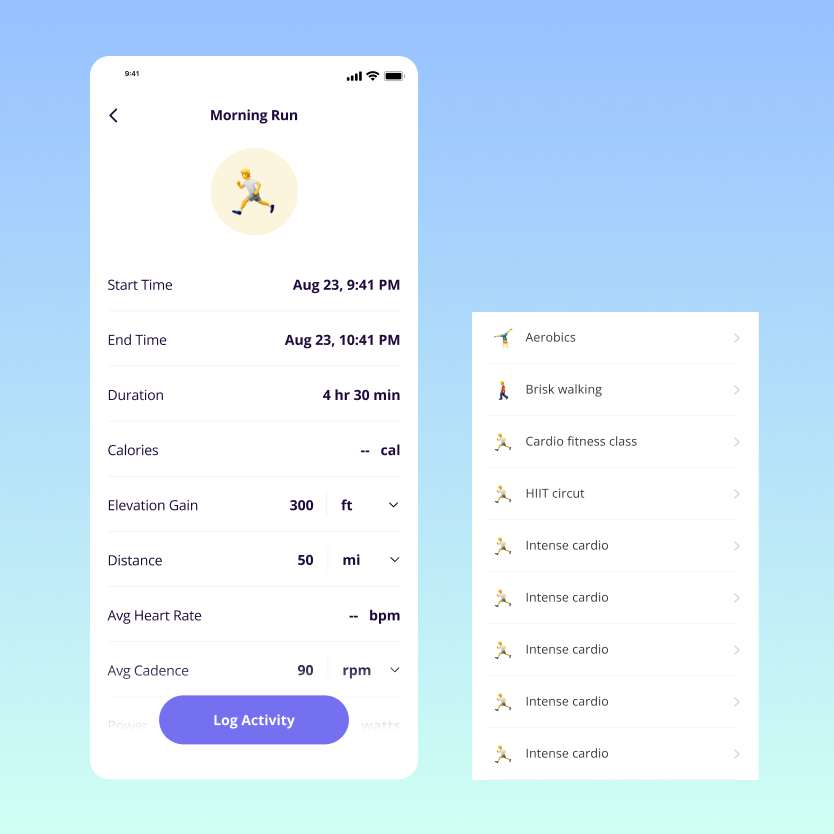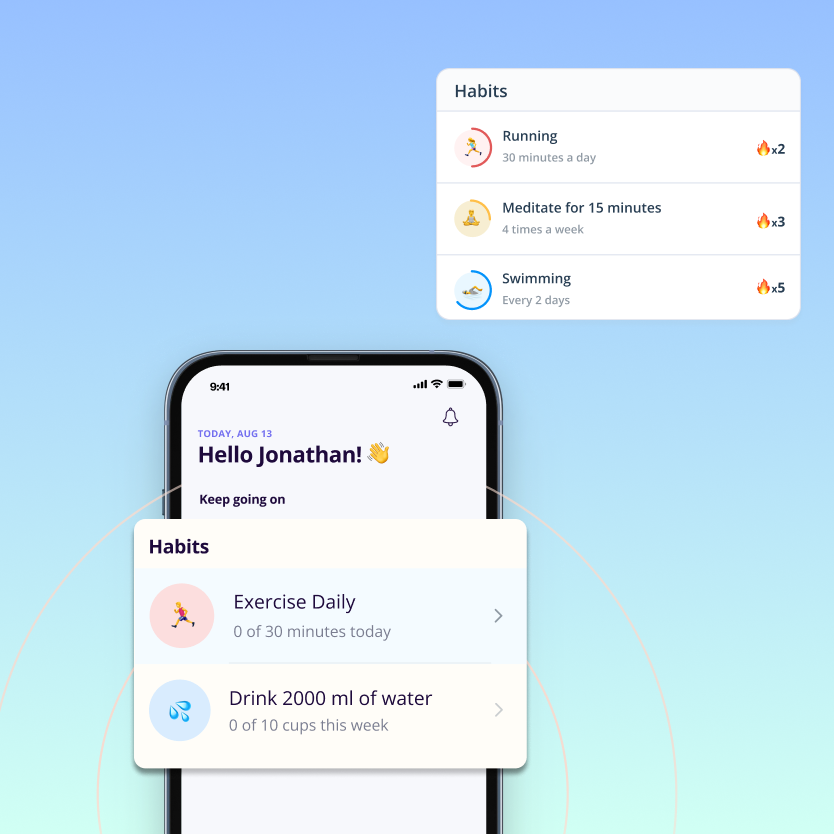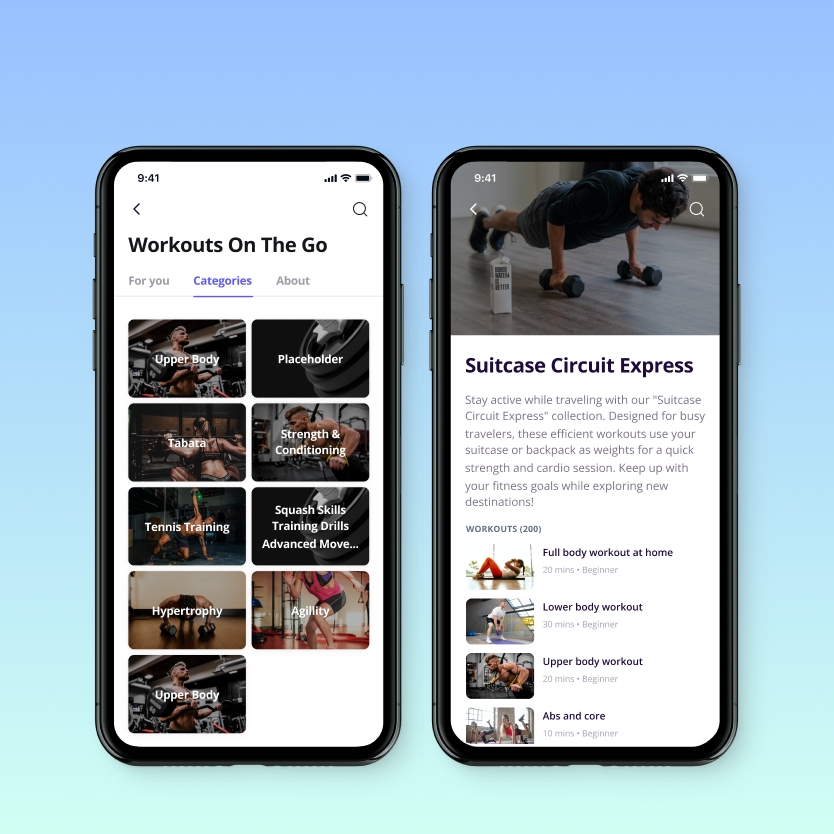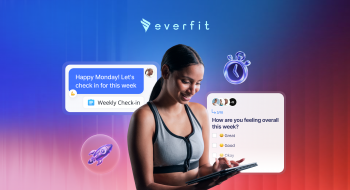Are you training customers on summer vacation? Here’s how to manage your schedule and avoid burnout.
Avoiding burnout is essential for any fitness coach and personal trainer, with almost one-third of trainers reporting burnout throughout their careers. But your usual routine might become more complex during the summer months when your clients try to hit their fitness goals while on summer vacation. Rapidly changing schedules, communication roadblocks, and time zones can play havoc with even the most carefully constructed PT schedule.
Fortunately, you can avoid burnout and protect your well-being by following a few simple strategies when coaching clients who are traveling.

What Causes Burnout When Training Customers That Travel?
Your usual coaching rhythm can be disrupted during the summer months, when your clients travel. Burnout creeps in. You struggle to keep up with their schedule, their progress, and their training schedule.
Even if their clients don’t exercise during vacation, it still influences their overall progress, meaning you have to work harder to get them back on track afterwards. So, why is it so hard?
- Communication gaps – Your client may be less available if they are adjusting their schedule for travel or childcare. This might mean you end up with sporadic gaps in training or a sudden transition to online classes.
- Disrupted routine – Your standard routine might deviate to include less sociable hours to work with clients on different time zones or schedules. This risks you working longer hours than usual when training customers, which could cause sleep deprivation or fatigue.
- Lack of control – If you are working with a client with a disrupted schedule, you may feel like you are losing control of your schedule. A perceived loss of control is a contributing factor to burnout.
- Time constraints – You may feel pressured when your clients are traveling, as you may need to pencil in last-minute or shorter sessions around holiday schedules.
- Motivation and accountability – Your client may be less motivated as they are on holiday, making it harder to achieve results as part of their training schedule. It can also be more challenging to hold clients to account as they eat or exercise less consistently when compared to their standard routine.
Tips For Avoiding Burnout When Training Traveling Clients
An essential part of avoiding burnout when training clients is to ensure that you and your client are on the same page regarding their fitness goals. During their holidays, it is inevitable that their routine will change. Tips for avoiding burnout include:
1. Help Your Client Set Goals Pre-Trip and during The Trip
Work with your clients to set pre-trip goals that will help give you and them a realistic view of their training schedule, duration of the trip, available equipment, and energy levels. Asking probing questions like ‘When will you be able to work out?’ and ‘How will your fitness goals change?’ can help give them a realistic understanding of what they can achieve when they are traveling.
Keep in mind that some clients don’t like the idea of working out on vacation. After all, it’s time for them to take some rest.
But as a coach, you can still make it fun and light-hearted, without pushing them to pick the dumbbell in the hotel gym. Setting the goals that fit their travel plan and activities, such as:
- Finish a hike to the top of the mountain.
- 50,000 steps around Paris in one week.
- 15 swimming laps around the pool.
These goals are easy to do. Even if they can’t do a proper workout, they are still able to keep their activity level up and maintain their progress.
2. Set boundaries
Routine changes, time zone shifts. You should set clear supporting hours to prevent last-minute messages or confusion across time zones.
Pro tip: If multiple clients travel at the same time, remember to block “off-client” hours so you can recharge. Think of it as a reset time for yourself, while your clients are having their own.
During their travel, consider shifting from live sessions to asynchronous support, like weekly email summaries or short voice notes. This gives your clients the flexibility to stay engaged, while allowing you to manage your energy and schedule more sustainably.
You could also set up weekly check-in forms to help with accountability during session gaps. Everfit’s Forms and Questionnaires can help you set up easy-to-follow mobile-compatible forms for your clients that they can use on the go.

3. Any activity is a workout
Your client’s workout will inevitably change while they travel. But trips also open up the possibility of more outdoor activities. Expand your client’s workouts to include outdoor walks, swimming, kayaking, or canoeing.
If they are unsure of what activities they are going to take before the trip, simply ask them to log any training activities on an app like Everfit or through the chat so you can keep track.

The goal is to be updated about their progress. Of course, what a hike can do is different with an assigned session with you. But during vacation, as long as they move, it counts.
4. Encourage Healthy Habit Coaching
Assign small habits as reminders to keep your client accountable when they travel. Not just the workout, eating, sleeping, and other habits can easily be messed up during vacation.
Set up “drinking eight glasses of water daily”, “having a five-minute meditation”, or “eating vegetables” to make sure their wellness is taken care of. Setting these as part of your standard coaching practice can help when your clients travel and help increase accountability.
Everfit’s Habit Coaching enables you to encourage your clients to set healthy habits during their travels.

5. Provide Extra Resources For Additional Workouts
Your clients may not have the time for scheduled sessions, but preparing additional workout sessions can help them manage workouts in their own time. This can help avoid the rigidity of fixed sessions that may cause burnout when clients travel in different time zones. Everfit allows you to create dedicated content portals that your clients can access while on the go.

6. Be creative
Lack of equipment and an accessible place can make you fall into repetitive, draining workout programming, especially if your clients travel for weeks.
To keep your creativity and enthusiasm high, diversify the way you design and deliver workouts. Use different themes—like bodyweight circuits, low-equipment mobility flows, or active recovery routines—to reduce monotony. Other days, you can suggest fun outdoor activities to keep their activity rate up, like bouldering or hiking.
Rotate templates or repurpose successful plans across similar client types. You’ll save time without sacrificing quality, and you’ll prevent mental fatigue from creating too many one-off plans under pressure.
Final Thoughts
Training clients during the summer or while they travel doesn’t have to disrupt your flow or lead to burnout. With clear boundaries, flexible communication, realistic goal-setting, and a commitment to your own well-being, you can continue delivering a high-quality coaching experience—without stretching yourself too thin.
The key is to work smarter, not harder. Whether your clients are on the beach, in a hotel gym, or logging workouts from an airport lounge, your systems—and your mindset—can support a sustainable, rewarding coaching practice year-round.
Keep showing up for your clients, but don’t forget to show up for yourself too.















